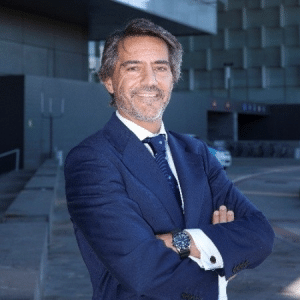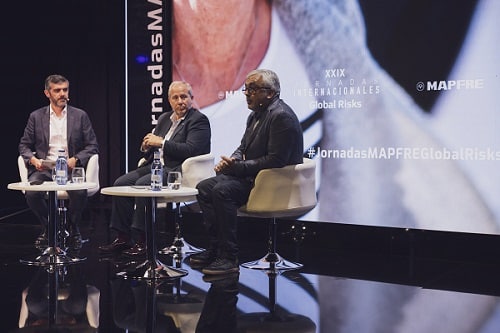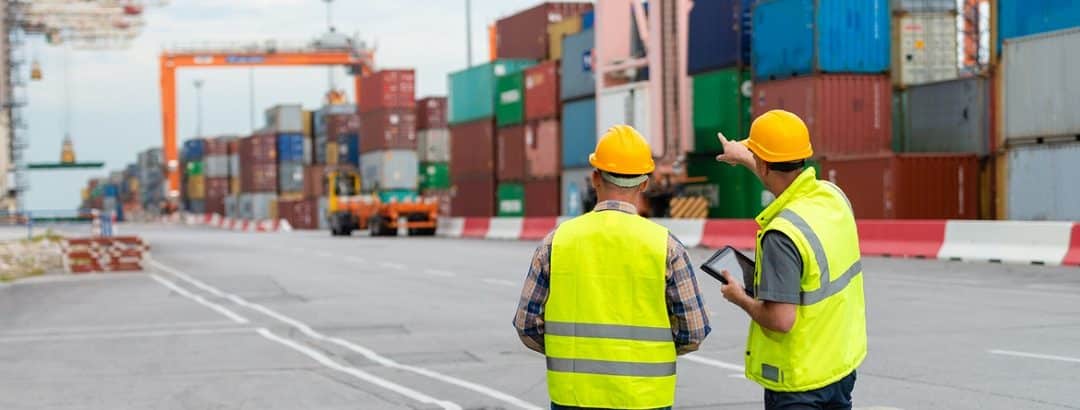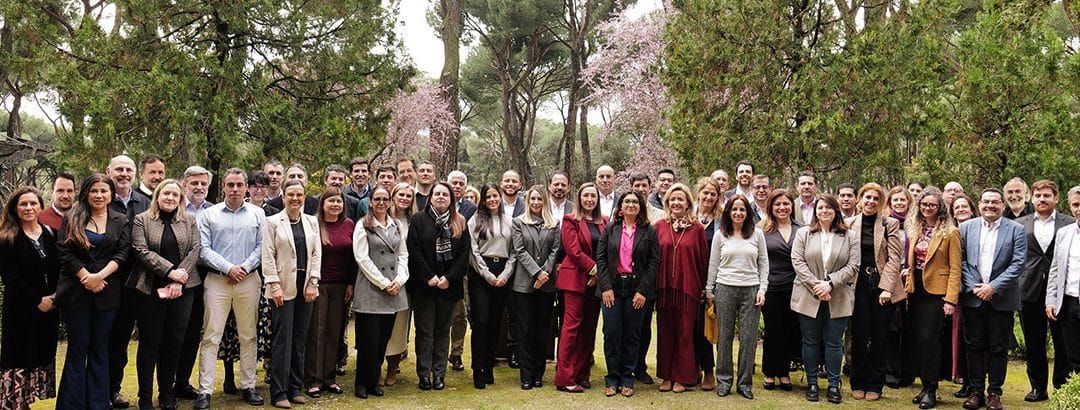Telefónica has been awarded the 4th International Award for Excellence in Risk Management, given by MAPFRE Global Risks, in recognition of its risk prevention management and culture. The award was collected by Augusto Pérez Arbizu, the company’s Risk Manager, and we took the opportunity to chat with him.
The International Award for Excellence in Risk Management reached its fourth edition at the MAPFRE Global Risks International Seminar, held in Malaga between June 05 and 07. The award, presented by Eduardo Pérez de Lema, Chairman of MAPFRE Global Risks, before nearly 500 risk managers, recognizes the work, policies, and culture for risk management, prevention, and protection carried out by Telefónica.
Augusto, congratulations. What does this recognition mean for the Risk Management work you do at the Telefónica Group?
It means an enormous recognition for the Telefónica team that has made this possible and that I am honored to represent. But this is only possible with a clear mission and a very long-term strategy, so it is a collective success of all the people who have been part of Telefónica’s Risk Management since Javier Navas Olóriz created the department in 1983. Since then, we have always been pursuing excellence, innovating, and taking on continuous challenges to this day.
On the other hand, this recognition reinforces within the Telefónica Group the key role played by our Risk Management team in making the organization more sustainable and resilient.
What do you consider to be the keys to a successful Risk Management?
I believe that the company’s values and culture are basic. The Risk Manager must contribute to generating that culture, but it is the Company’s highest governing bodies that define it. The risk prevention culture must be incorporated in the DNA of each “risk owner” and of each employee, taking this reasoning to the extreme.
The Risk Manager becomes a catalyst. It is sometimes advisable not to intervene more than necessary in the identification/assessment/mitigation phases, where the risk owner has an experience and a background that we must respect and value.
Our role will take center stage in the last phase of the search for and design of risk financing solutions. At this point, the attitude of the Risk Manager towards the market should not be that of an insurance buyer, but that of a salesperson who, convinced of their product, sells the risks of their own organization.
In addition to the above, I would highlight one of Telefónica’s values, its “pioneering spirit,” as one of the keys to success in our case. Being a pioneer means going into uncharted territory, being the first to do something. Being a pioneer has a lot to do with innovation. There are countless examples where Telefónica was the first to do something and this has been transferred to its Risk Management. I will give just three examples:
- Telefónica was a pioneer in the creation of its Captive Reinsurer no less than 36 years ago (in 1988).
- Telefónica was a pioneer in the creation of the first Multinational Cyber Risk Program in 2008, when it was still treated as an “emerging risk” and was not insurable in the market.
- More recently, Telefónica has been a pioneer in challenging some established market conventions regarding the participation of Captives in D&O insurance.
Innovation often requires challenging the conventional practices and paradigms of the moment.
In these 100 years of existence that you are celebrating in 2024, how have the risks and prevention faced by a company like Telefónica evolved?
The evolution has not been linear, but exponential, in line with the evolution of technology and society as a whole. Therefore, the change in Telefónica’s risk profile is accelerating and is concentrated in the last stage of these 100 years. Perhaps we can consider the appearance and generalization of the use of the internet just over 25 years ago as a turning point.
 Due to the rapid technological evolution of telecommunications networks and equipment, there is the paradox that replacement values drop from one year to the next, while at the same time more resilient networks are created and therefore with a lower risk of loss of profit in the event of monetary loss. In other words, the traditional risk of damage to tangible assets and loss of profit decreases. This is a very unique feature of the Telecom sector. At the same time, intangible risks such as reputation, regulation, sustainability, etc., are growing steadily.
Due to the rapid technological evolution of telecommunications networks and equipment, there is the paradox that replacement values drop from one year to the next, while at the same time more resilient networks are created and therefore with a lower risk of loss of profit in the event of monetary loss. In other words, the traditional risk of damage to tangible assets and loss of profit decreases. This is a very unique feature of the Telecom sector. At the same time, intangible risks such as reputation, regulation, sustainability, etc., are growing steadily.
Technological risks take on special relevance at a company like Telefónica. As I have already mentioned, we were pioneers in creating a Multinational Cyber Risk Program more than 15 years ago and we were right. Today, in Telefónica’s Risk Management we consider this risk to be more critical than the traditional risk of Monetary Loss. Two years ago, we completely changed the model of this program and decided to change its name to Technological Risks. We have always wanted to give this risk an open approach and not only linked to malicious acts of third parties, but to any type of logical (non-physical) damage and its consequences, whether in the form of loss of profits, penalties, loss of digital assets, third-party claims, etc.
In the world of Technological Risks or Cyber Risks, mere prevention is clearly insufficient, and the concept of Cyber Resilience appears. In addition to prevention, other pillars such as detection, response, and recovery are key. We must assume that we are going to suffer cyber incidents with a certain recurrence. The aim is to prevent them from having a significant impact on our operations and financial statements. The last pillar is that of adaptation. We must continually adapt our defense model to the rapid evolution of these risks.
Thinking ahead, let’s not move to the next 100 years, but what risks do you think will have the greatest impact globally in the next 10 years?
Cyber Risks will continue to be at the top of the podium in all rankings due to the rapid technological evolution and unstoppable increase in the digitization of any activity and any aspect of our lives. Today, we can barely glimpse at the risks that we may face from Artificial Intelligence, Biotechnology, autonomous driving, or life in the Metaverse, to give just a few examples.
Other risks that, in my opinion, will continue to occupy the top positions are:
- Geopolitical Risks
- Climate Risk
- Regulatory and/or Compliance Risk derived from the sustained increase in regulation.
What value do you think MAPFRE Global Risks can bring to the management of your insurance programs in the next decade?
MAPFRE Global Risks has been very flexible in adapting to Telefónica’s needs. A few years ago, it excellently resolved the market’s perennial problem with delays in issuance processes, as well as in premium and claims settlement flows with the Captive. MAPFRE’s firm commitment to those Telefónica risks that fall within its underwriting policy is also very valuable to us.
The bar, therefore, is already very high with MAPFRE’s current value contribution in the management of our programs. However, given that I am asked for a projection for the next decade, I would challenge MAPFRE to gradually increase its appetite for less traditional risks, such as cyber and other financial lines, which, as I indicated earlier, will continue to increase their relevance in Telefónica’s Risk Map.
 Finally, taking stock of the last three days, what would you highlight about the 29th edition of the MAPFRE International Global Risks Seminar?
Finally, taking stock of the last three days, what would you highlight about the 29th edition of the MAPFRE International Global Risks Seminar?
First of all, I must congratulate MAPFRE for the excellent organization and the quality of the contents. The MAPFRE Global Risks International Seminar has been a benchmark in the market for many years now. When the bar is set so high, it becomes increasingly difficult to exceed expectations, and MAPFRE manages to do so year after year.
There were seven panels and four presentations, all of them of the highest level and explained in great depth, especially those related to Reinsurance and Casualty market trends. I would also highlight the debate on the exponential growth of Cyber premiums and how the volume is still considered insufficient (USD 35 trillion) compared to that of the Real Estate Market.
Equally noteworthy was the discussion on Artificial Intelligence, as well as the panel on Life and Health, for how Risk Management and Human Resources areas can collaborate to attract talent and enhance employee loyalty through social benefits and their flexibilization.





